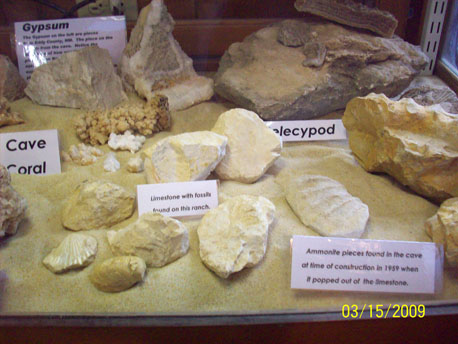 |
 |
"The Texas caves bred
an enthusiastic population of explorers around mid-twentieth century.
Some went caving for the sheer adventure of it; some went as geologists
and biologists--scientists looking for new ways to look at life. All
went, like Columbus, looking for a new world" (Pittman 1999). Pittman
describes that for cavers and spelunkers in the early 20th century
"exploration and adventure underground were of primary importance" but
by mid-century, as the science grew into today's speleology, values
gradually shifted toward a desire to understand, and increasingly to
protect this unique underground realm (ibid). Environmentally sensitive
tourists, scientists and ecologists are unified by the common desire to
experience the cave, and having appropriated its sights and come to
appreciate the wonder of its fragile ecosystem, are motivated to protect
the cave systems as a valued resource. Numerous organizations have
coalesced to assist the tourism industry, scientist and environmentalist
alike achieve this aim.
From the International Show Cave Association: "The purpose of the Association is to guarantee, on the one hand, the respect and the safeguard of the subterranean environment and its natural wonders while on the other hand it aims at promoting the economic development of the caves by supplying to all its members (i.e. the show caves) the experiences and solutions gained on the subject of research and management activities carried out by the most advanced caves which can afford a larger expense" (http://i-s-c-a.com/).
From the National Speleological website: "With nearly 12,000 members and 200 grottos, the National Speleological Society does more than any other organization to study, explore, and conserve cave and karst resources; protect access to caves; encourage responsible management of caves and their unique environments; and promote responsible caving" (http://www.caves.org/).
From the American Cave Conservation Association: We educate people about caves and karstlands so that these features and their resources can be conserved. We support the studies of caves and karstlands since good education must be based upon good information ... ACCA is composed of three fundamental components, museums, educational programs and projects and assistance ... ACCA members are part of a special group working to preserve one of the most unusual environments on Earth (http://cavern.org/acca/aboutacca.php).

Cave presentations and tours package discourses of science and conservatism for the visitor in numerous ways. As a key theme in the world of caverns, science is objectified in displays that focus on categorizing the various formations, describing their underlying causes, and promoting their value in the ecosystem at large. Display cases may exhibit typical formations, signage and placards identify the different types of speleothems, and even the novice tour guide will describe the difference between stalagtite and stalagmite. Cave sites, commercialized or not, are primarily viewed as sites of research which must be kept pristine in order to facilitate continually veracious research, protection of the endangered species inhabiting the caves, and management of the effects of the fragile ecosystem on the local landscapes and watersheds. Visitors unschooled in this value system are often viewed as interlopers, and the unmindful tourist eyed with disdain. In fact, the ordering of the primary goals of the NSS sheds light on an embedded hierarchical structure: "Preserving and protecting caves and karst for cavers, scientific research, and the general public is one of the most important goals of the NSS" (www.caves.org/committee/conservation/). Science must understand the caves in all their intricasies in order to know how best to preserve them, and from the scientific perspective, this is the only truly acceptable objective for engaging with the underground realm. William Halliday, in his book "Adventure is Underground" describes this communal quest that drives speleologists like himself: "In the long run, the final satisfaction in caving is derived from the knowledge that, through systematic surveys of our caves, and their remarkable contents, we really know them" (1959, xviii).
[ Back ] | [ Continue Tour ] |